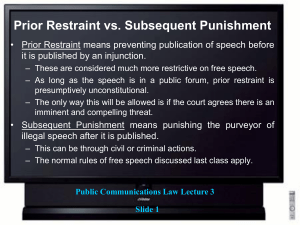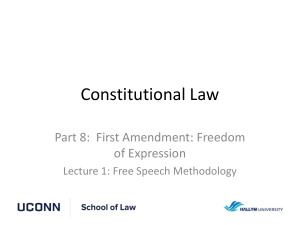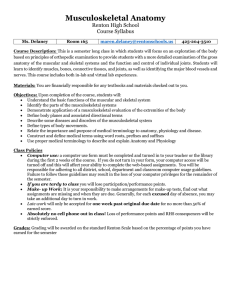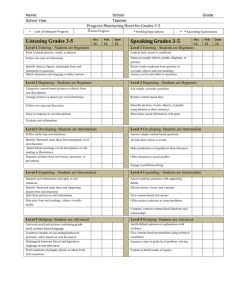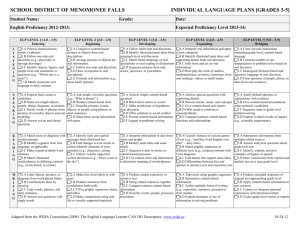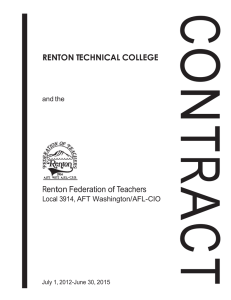Slide 1
advertisement
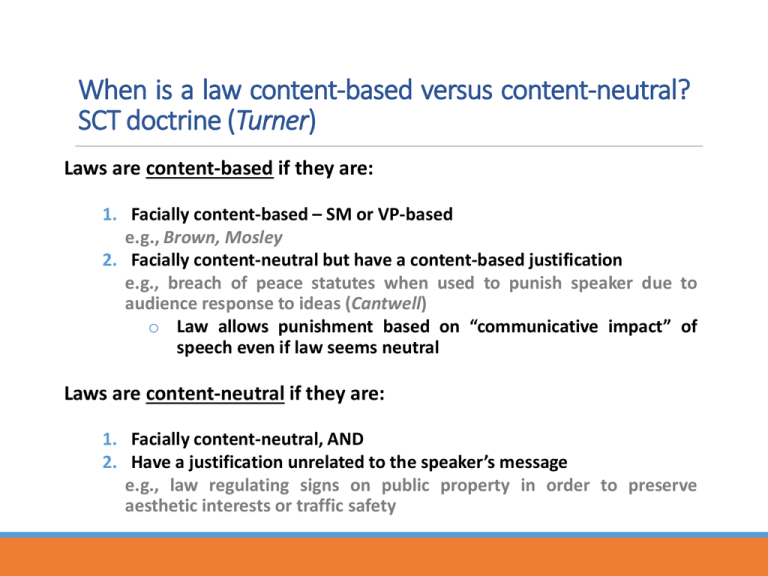
When is a law content-based versus content-neutral? SCT doctrine (Turner) Laws are content-based if they are: 1. Facially content-based – SM or VP-based e.g., Brown, Mosley 2. Facially content-neutral but have a content-based justification e.g., breach of peace statutes when used to punish speaker due to audience response to ideas (Cantwell) o Law allows punishment based on “communicative impact” of speech even if law seems neutral Laws are content-neutral if they are: 1. Facially content-neutral, AND 2. Have a justification unrelated to the speaker’s message e.g., law regulating signs on public property in order to preserve aesthetic interests or traffic safety Turner Broad. v. FCC – speaker based restrictions Must-carry provisions of Cable Act require cable operators to set-aside a portion of their channels for local broadcast stations. Congressional Findings o Government interest in promoting diversity of views thru multiple technology media. o A primary objective/benefit of TV broadcasting is local origin of programming. o Broadcast TV stations are an important source of local news and public affairs programming. o Physical characteristics of cable systems are in danger of concentrating economic power in cable systems who have economic incentives to prefer their programming over local broadcasters o viability of broadcast and access to free programming is threatened SCT: o Act is a speaker-based restriction o Speaker-based restrictions are not inherently content-based – must judge such restrictions individually as to whether they unreasonably restrict content How do the Turner opinions resolve the issue of whether the Act is CB or CN? Who has the better argument – majority or dissent? Renton v. Playtime Theatres, Inc. ◦ Local ordinance prohibits adult theaters showing films with “specified sexual activities” from locating within 1,000 feet of residential zones, churches, . . . On its face, is the law content-based or content-neutral? How does Justice Rehnquist classify the ordinance? reasoning? What is his Is his description consistent with the general understanding of contentneutral laws? “Secondary effects” reasoning and content-neutrality – the possible import of Renton: Hypothetical: City enacts an ordinance banning all public discussions of the President’s AUMF against ISIS (subject-matter ban) because such displays tend to attract large numbers of protestors, which in turn bring problems related to crime, litter, etc. ◦ Under Renton, this law is content-neutral because it is based on secondary effects of speech (violence and neighborhood deterioration). ◦ Are there problems with this analysis? What does it do to notions of “content-neutrality”? Comparing evidentiary requirements & tailoring in Renton & Brown How carefully does the Court examine the evidence supporting the law? Compare to Brown. How carefully does the Renton Court scrutinize the application of the rest of intermediate scrutiny – in this case the ample alternatives prong of the test? ◦ Compare to Brown. What did the majority say there with respect to how narrowly tailored the law needed to be in order to survive?
